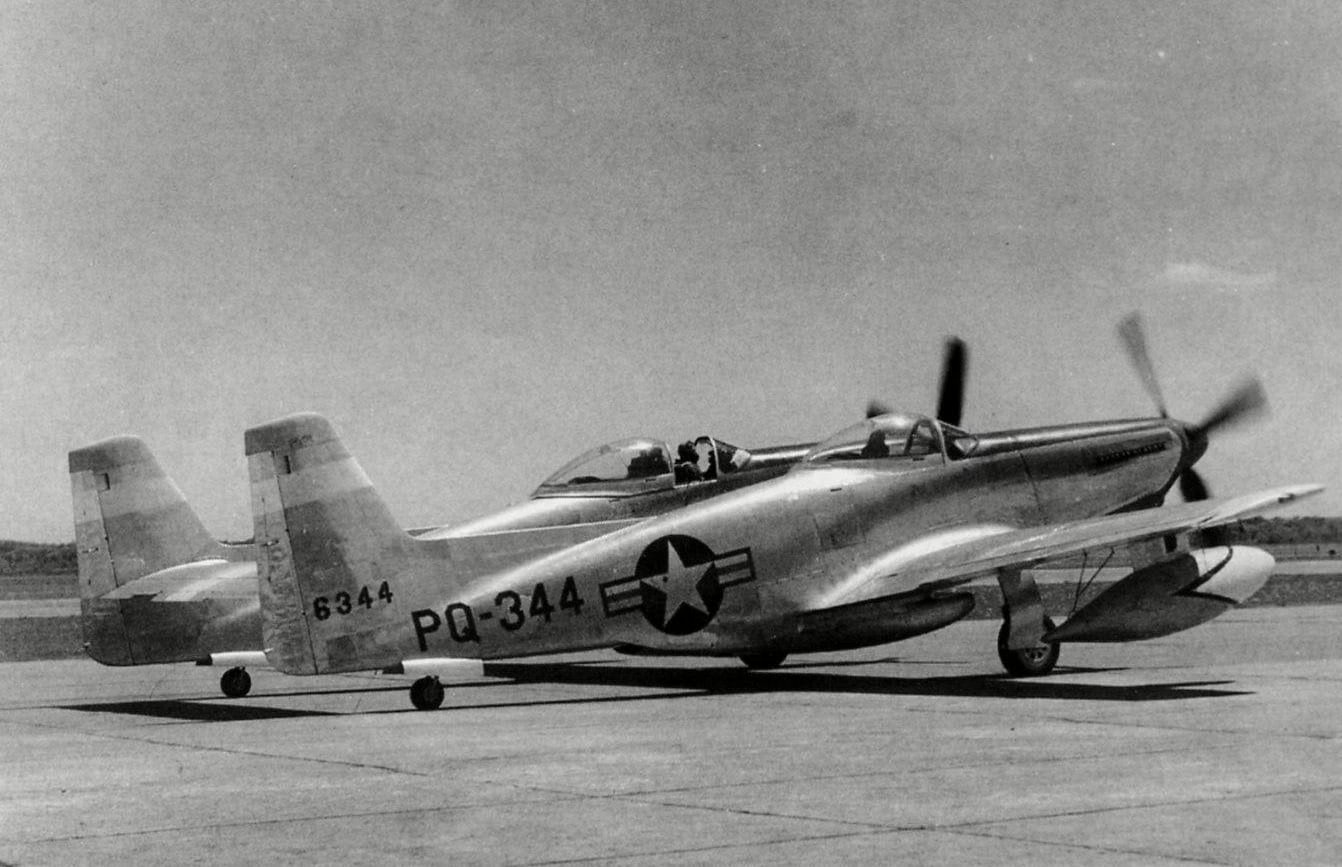North American F-82E Twin Mustang historical facts
The North American F-82E Twin Mustang was in effect an Allison-engined P-82B, and the order for 100 aircraft was placed in November 1945 (the contract appear to have been effective from 12 December 1945). It can be argued that this order was part of a plan by the USAAF to help keep aircraft manufacturers alive in the immediate postwar period, as the massive cancellation and cutbacks occasioned by the end of the war had caused real problems for some companies. The Allison engine in the P-82E were ‘handed’ to reduce torque, and drove the now well-established Aeroproducts propellers, which of course were also handed and were also fully feathering.
The P-82E (F-82E after mid-1948) was built from early 1946 and eventually served with success with one long-range bomber escort wing of SAC. North American F-82E Twin Mustang was not alone, however, in being considered for the long-range escort fighter role. One of NAA’s rivals, Northrop, had also recognized the need for a very-long-range bomber escort, and had set about developing its big, twin-engine Northrop P-61B Black Widow nightfighter into a long-range day fighter. The resulting XP-61E was a very cleaned-up version of the Black Widow, but in the event it was not preferred over the Twin Mustang and only two were converted a prototypes from existing P-61B Black Widows.
The day fighter, bomber escort version of the Twin Mustang, the North American F-82E Twin Mustang, served principally with one USAF unit. This was the 27th FW, which already had a long association with the Mustang. The unit had been based at Kearney Army Air Field, Nebraska, but converted on to the F-82E Twin Mustang during 1948, although it continued to have some North American P-51 Mustangs on strength as well in the late 1940s. The 27th was still based at Kearney (later renamed as an AFB) during March 1948, when it started to receive initial deliveries of F-82E Twin Mustangs.
In February 1949 fifty-four of the 27th’s Twin Mustangs set off on a long range flight that took them south in stages from Kearney AFB to Panama and back, the whole exercise taking some ten days. A number of the stages were flown at night, and the whole exercise was flown without a bomber to escort the fighters and provide navigation. Such long-range flights were aided by the Twin Mustang having two crew members, for the copilot in the starboard fuselage was able to take over and fly the aircraft from time to time to allow the pilot to rest. Indeed, the crew member in the right-hand fuselage had to fly the aircraft for the sake of safety during formation flying if his aircraft was the one on the extreme left of the formation. The North American F-82E Twin Mustang could certainly be flown from the starboard seat because all the relevant controls and instruments were provided (although some of these could be stowed away when not needed). The copilot was also able to lower the undercarriage in an emergency and perform other tasks as necessary. However, he had a rough time if the aircraft was rolled. Twin Mustangs tended to roll around the port fuselage, so the pilot had no particular problems, but the manoeuvre could be very uncomfortable for the occupant in the right-hand cockpit.










Thank you for taking the time and effort to make this info available..
Thank you very much for your kind words.
I am very glad you found this article useful.
Kindest Regards,
Marius Bujor, admin